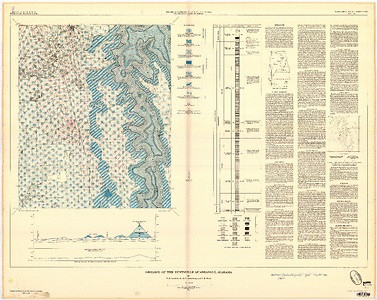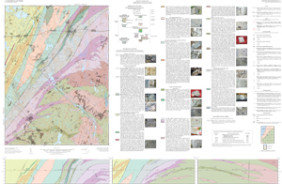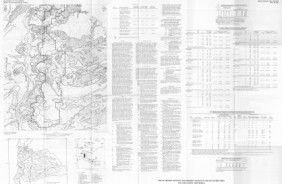
Product Details
- Product Number
- 26029
- Series
- I-329
- Scale
- 1:24,000
- Alternate ID
- GI0329D
- ISBN
- 978-0-607-77095-7
- Authors
- SANFORD, T. H., JR.
- Version Date
- 01/01/1961
- Regions
- AL
- Countries
- USA
- Media
- Paper
- Format
- Flat
- Digital Reproduction
- Yes
Additional Details
- Description
-
Geology of the Huntsville quadrangle, Alabama
IMAP 329
Prepared in cooperation with the City of Hunstville and Geological Survey of Alabama
By: T.H. Sanford Jr., G.T. Malmberg, and L.R. West
https://doi.org/10.3133/i329
Abstract
The 7 1/2-minute Huntsville quadrangle is in south-central Madison County, Ala., and includes part of the city of Hunstville. The south, north, east, and west boundaries of the quadrangle are about 3 miles north of the Tennessee River, 15 1/2 miles south of the Tennessee line, 8 miles west of the Jackson County line, and 9 miles east of the Limestone County line.
The bedrock geology of the Huntsville quadrangle was mapped by the U.S. Geological Survey in cooperation with the city of Hunstville and the Geological Survey of Alabama as part of a detailed study of the geology and ground-water resources of Madison County, with special reference to the Huntsville area. G. T. Malmberg began the geologic mapping of the county in July 1953, and completed it in April 1954. T. H. Sanford, Jr., assisted Malmberg in the final phases of the county mapping, which included measuring geologic sections with hand level and steel tape. In November 1958 Sanford, assisted by L. R. West, checked contacts and elevations in the Hunstville quadrangle; made revisions in the contact lines; and wrote the text for this report. The fieldwork for this report was completed in April 1959.
- Survey Date
- 1961
- Print Date
- 1961
- Height In Inches
- 37.070
- Length In Inches
- 46.580
- Boundary Type
- Quadrangle
- Two Sided
- No
- Pieces
- 1
- Languages
- English





